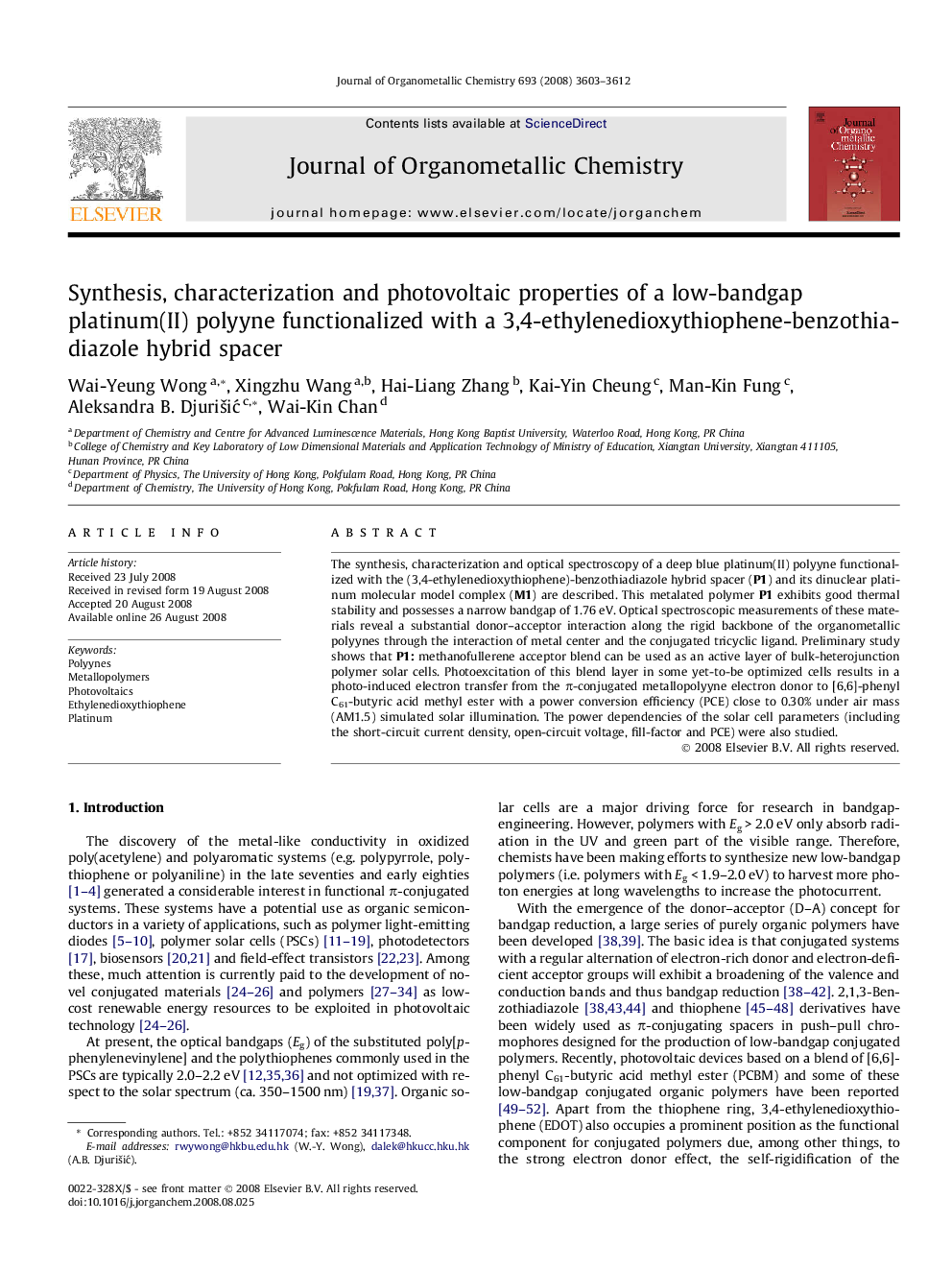| کد مقاله | کد نشریه | سال انتشار | مقاله انگلیسی | نسخه تمام متن |
|---|---|---|---|---|
| 1325515 | 977387 | 2008 | 10 صفحه PDF | دانلود رایگان |

The synthesis, characterization and optical spectroscopy of a deep blue platinum(II) polyyne functionalized with the (3,4-ethylenedioxythiophene)-benzothiadiazole hybrid spacer (P1) and its dinuclear platinum molecular model complex (M1) are described. This metalated polymer P1 exhibits good thermal stability and possesses a narrow bandgap of 1.76 eV. Optical spectroscopic measurements of these materials reveal a substantial donor–acceptor interaction along the rigid backbone of the organometallic polyynes through the interaction of metal center and the conjugated tricyclic ligand. Preliminary study shows that P1: methanofullerene acceptor blend can be used as an active layer of bulk-heterojunction polymer solar cells. Photoexcitation of this blend layer in some yet-to-be optimized cells results in a photo-induced electron transfer from the π-conjugated metallopolyyne electron donor to [6,6]-phenyl C61-butyric acid methyl ester with a power conversion efficiency (PCE) close to 0.30% under air mass (AM1.5) simulated solar illumination. The power dependencies of the solar cell parameters (including the short-circuit current density, open-circuit voltage, fill-factor and PCE) were also studied.
The synthesis, characterization, and photovoltaic properties of a deep blue polyplatinyne are described, which shows a narrow bandgap of 1.76 eV due to the substantial donor–acceptor features along the main chain. It can give rise to photovoltaic spectral responses in the visible region at about 565 nm in bulk-heterojunction polymer solar cells.Figure optionsDownload as PowerPoint slide
Journal: Journal of Organometallic Chemistry - Volume 693, Issue 24, 15 November 2008, Pages 3603–3612